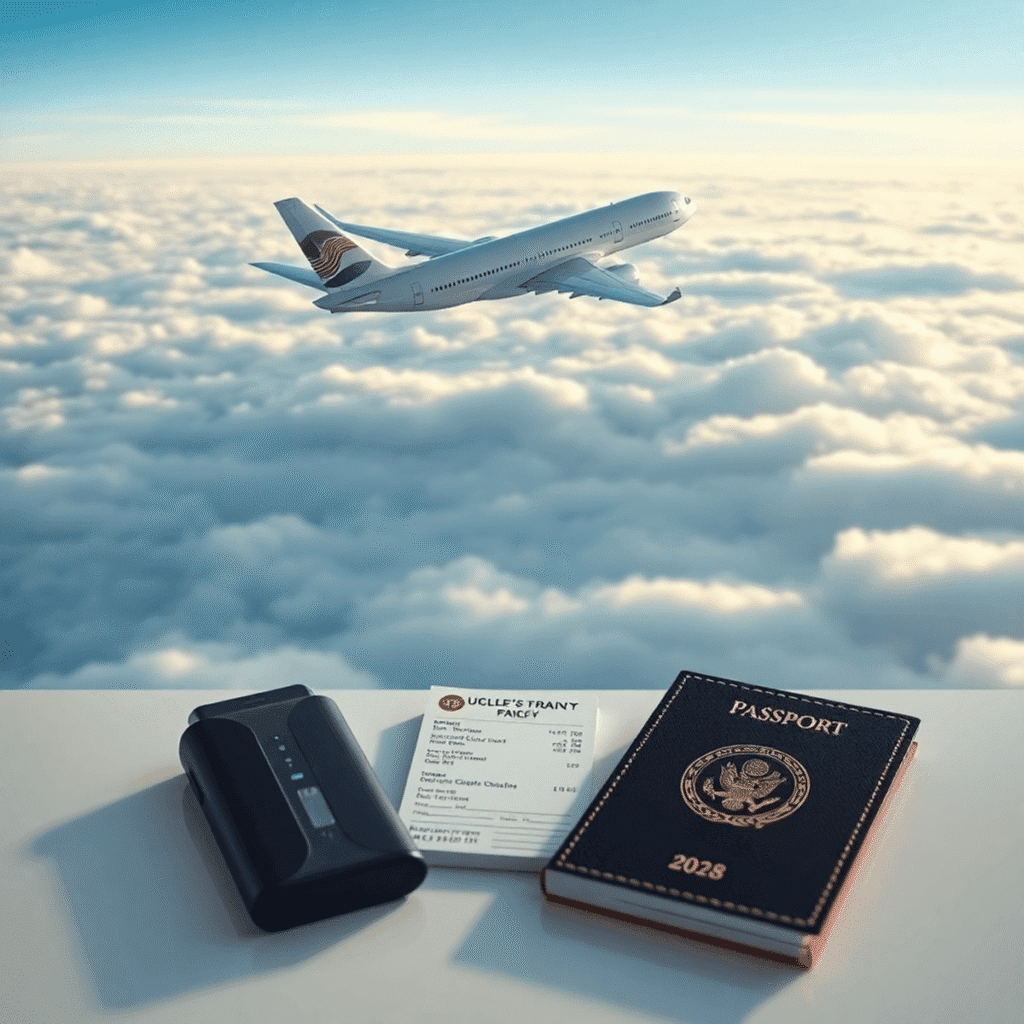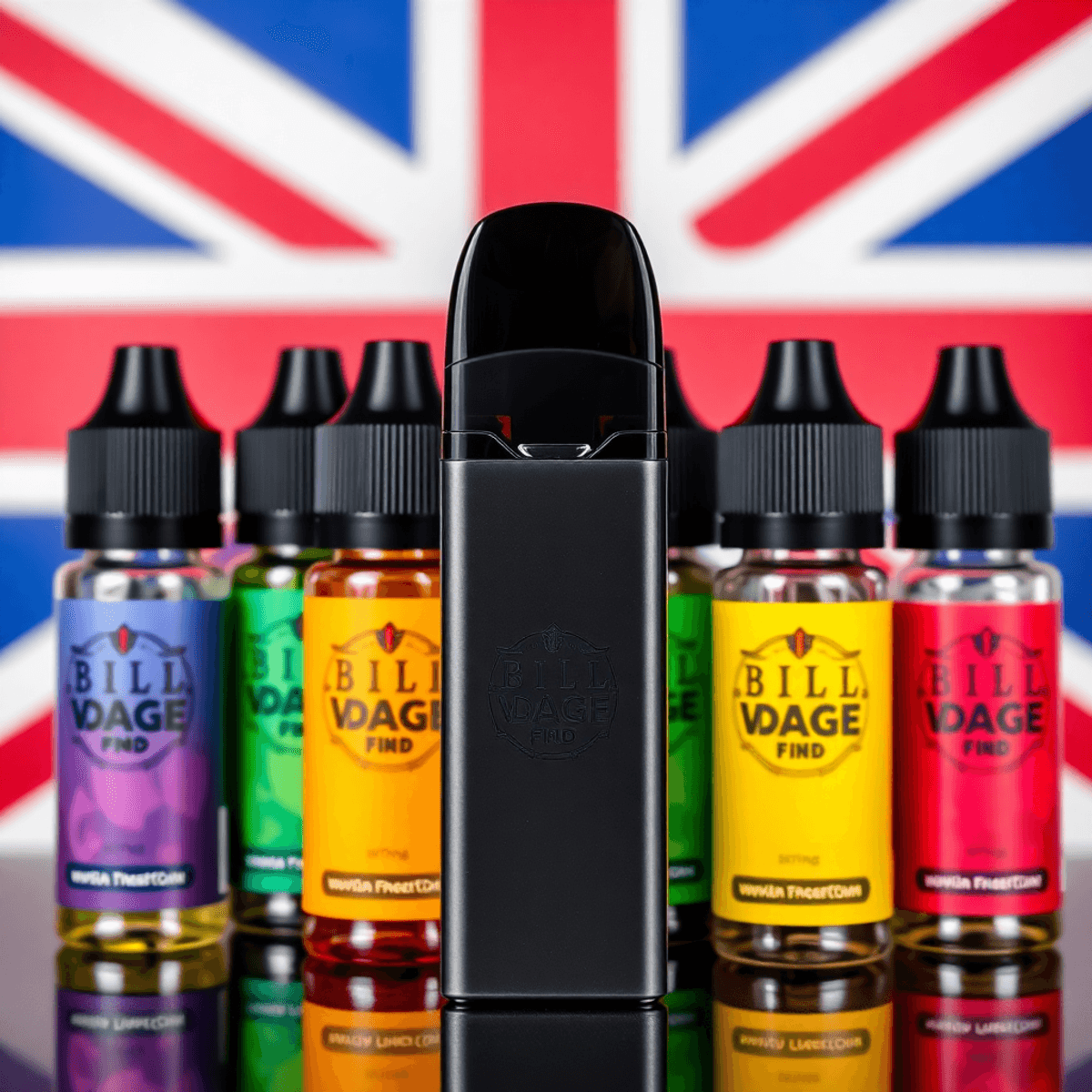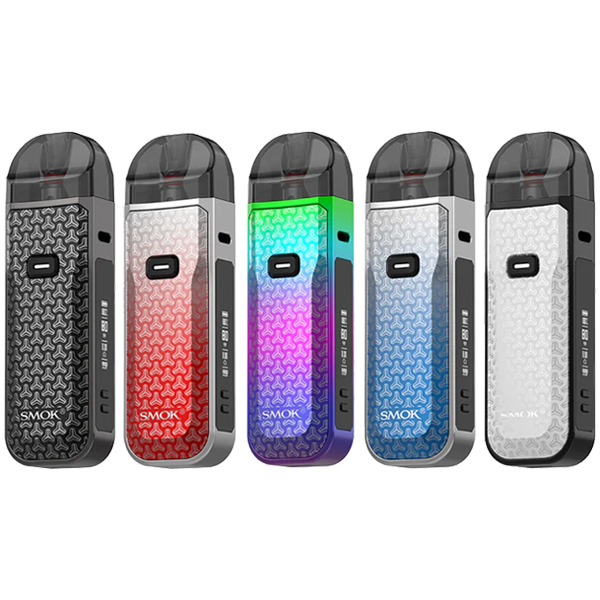The surge in vaping’s popularity has created new considerations for travellers worldwide. As more people switch from traditional cigarettes to electronic alternatives, understanding how to travel with vape devices becomes essential knowledge for the modern jet-setter.
Air travel presents unique challenges for vapers. From strict security protocols to airline-specific regulations, navigating these requirements can feel like walking through a maze. A single oversight could lead to confiscation of your devices or denied boarding.
At TopVapes, our Manchester-based team of expert reviewers has helped countless vapers tackle these travel challenges. Through extensive testing and real-world experience, we’ve gathered crucial insights about flying with vaping devices. Our specialists have:
- Tested hundreds of travel-friendly vaping devices
- Researched international vaping regulations
- Collaborated with airlines to understand their policies
- Documented first-hand experiences at various airports
The key to stress-free travel lies in understanding the rules before you pack your bags. Whether you’re a seasoned vaper planning your first flight or a frequent flyer new to vaping, knowing these regulations can save you from unexpected complications at the airport.
Let’s explore the essential information you need to ensure your vaping devices don’t ground your travel plans.
Vaping and Fasting: What You Need to Know
As a vaper, you might wonder about the implications of vaping on your fasting practices. It’s a common concern among those who fast for health or spiritual reasons. To shed light on this topic, we provide an insightful article on whether vaping breaks a fast, which explores the impact of vaping on fasting practices.
Understanding the Caloric Count in Vaping
Another question that often arises is about the caloric content of vape products. With the growing popularity of vaping, many are curious about how many calories are in a vape. This article unravels the mystery behind the caloric count associated with vaping.
Exploring Top Vape Brands in the UK
If you’re looking to switch up your vape products or brands while travelling, it’s beneficial to know about the top vape brands across the UK. Our comprehensive guide highlights well-known names and up-and-coming companies making waves in the UK market.
Maintaining Your Vape Device During Travel
Part of keeping your vape running smoothly involves knowing how to take care of its components. One crucial aspect is understanding how long vape coils last and how to extend their lifespan. This knowledge is particularly useful when you’re travelling and need your device to perform optimally.
Understanding the Regulations for Flying with Vaping Devices
The Federal Aviation Administration (FAA) has established strict regulations regarding vaping devices on aircraft. You cannot pack vaping devices in checked luggage under any circumstances. This rule exists due to documented incidents of e-cigarettes causing fires in cargo holds.
Safety Risks Posed by Lithium-Ion Batteries
Lithium-ion batteries, which power vaping devices, present significant safety risks during flights:
- These batteries can short-circuit under pressure
- Temperature changes in cargo holds can trigger thermal runaway
- Battery failures can lead to uncontrollable fires
- Limited access to cargo areas makes fire control difficult
Carrying Vaping Devices in Hand Luggage
The Civil Aviation Authority (CAA) mandates that all vaping devices must be carried in hand luggage where cabin crew can quickly respond to any incidents.
Essential Safety Measures for Air Travel:
- Remove batteries from devices when possible
- Use protective cases to prevent accidental activation
- Store batteries separately from e-liquids
- Keep devices easily accessible for security checks
- Turn off all devices before boarding
Declaring Vaping Devices at Security Checkpoints
The Transportation Security Administration (TSA) requires you to declare your vaping devices at security checkpoints. Security officers may ask you to demonstrate that your device powers on and off.
Additional Safety Protocols Implemented by Airlines
Many airlines have implemented additional safety protocols:
- Specific storage requirements for devices
- Limits on the number of batteries allowed
- Mandatory device inspection at gates
- Documentation requirements for certain high-capacity devices
These regulations align with international aviation safety standards and apply to all types of vaping devices, including pod systems like the popular Vaporesso LUXE Q, box mods, and disposable e-cigarettes such as the Lost Mary BM600 series.
For those who enjoy a variety of flavours while vaping, it’s essential to know that there are multiple options available in terms of e-liquids. However, remember to follow the essential safety measures mentioned above when travelling with these devices. If you’re unsure about any aspect of travelling with vaping devices, you might find helpful insights in our guides or advice section.
Restrictions on Vape Liquids and Accessories When Flying
Airport security treats vape liquids similarly to standard toiletries under the 100ml rule. You must pack e-liquids in containers no larger than 100ml, placed within a clear, resealable plastic bag. The total volume of liquids can’t exceed 1 litre per passenger.
Rules for Carrying Vape Liquids Through Security
The rules for carrying vape liquids through security include:
- Place bottles in a clear plastic bag
- Each container must be 100ml or less
- Remove the bag from your hand luggage for screening
- Declare larger quantities of prescription e-liquids to security staff
Vaping Prohibition on Planes
Vaping on planes is strictly prohibited worldwide. Many countries have implemented harsh penalties for those caught vaping during flights:
- UAE: Up to 3 years imprisonment
- Singapore: Fines up to $2,000
- USA: Potential civil penalties reaching $4,000
- UK: Risk of arrest and prosecution
TSA-Approved Alternatives for Long-Haul Flights
For long-haul flights, consider these TSA-approved alternatives:
- Nicotine patches
- Nicotine gum
- Nicotine lozenges
- Nicotine nasal spray (with prescription)
Based on Team TopVapes’ experience, nicotine patches prove most effective during flights, offering steady nicotine release without drawing attention or breaking regulations.
Check Airline Policies on Vaping Accessories
Remember to check specific airline policies before travelling, as some carriers might have additional restrictions on certain vaping accessories like spare coils or empty tanks. For instance, if you plan to carry sub-ohm vaping equipment, it’s crucial to understand what sub-ohm vaping is and the associated coil requirements.
If you’re considering packing spare coils, such as the popular Vaporesso GT Cores GT2 Coil 0.4Ω, ensure they comply with airline regulations. Similarly, if you’re bringing along a pod kit like the Vaporesso XROS 3 Mini Pod Kit, make sure it adheres to the guidelines set by your airline.
Limit Carry-On Vaping Accessories
Additionally, it’s advisable to limit your carry-on vaping accessories to essential components that you’ll need at your destination.
Navigating Airline Policies and Airport Regulations Regarding Vapes
Different airlines enforce distinct policies regarding vape devices on their aircraft. For instance, while British Airways strictly prohibits the use of e-cigarettes during flights, other carriers like Ryanair and EasyJet maintain similar zero-tolerance approaches. It’s crucial to check your specific airline’s regulations before flying, as some airlines have specific baggage restrictions that could affect your travel plans.
Common airline policies include:
- Complete ban on vaping during flights
- Requirement to store devices in carry-on luggage
- Mandatory device deactivation during the journey
- Specific battery capacity restrictions
Airport vaping presents its own set of challenges. Many UK airports have reduced or eliminated indoor smoking areas, directly impacting vapers. Heathrow Airport provides designated zones in Terminals 2, 3, 4, and 5, yet Manchester Airport limits smoking areas to outdoor locations only.
Current airport vaping situations:
- Pre-security areas might offer designated spaces
- Post-security options are increasingly limited
- Outdoor areas require passing through security again
- Some airports provide no vaping facilities
The Team at TopVapes recommends checking airport websites or contacting them directly about their vaping policies. Each airport’s rules can differ significantly, with some treating vaping devices the same as traditional cigarettes, while others maintain separate regulations.
Many international airports have implemented stricter measures, particularly in Asia where countries like Singapore and Thailand enforce complete vaping bans. For instance, if you’re planning a trip to Thailand, it’s essential to be aware of these regulations as you might face hefty fines or legal consequences for violating them.
For those considering a transition away from vaping or smoking altogether, TopVapes’ comprehensive guide offers valuable strategies to transform your habits and lead you towards a healthier tomorrow. Additionally, if you’re weighing the options between vaping vs smoking, recent research strongly suggests that vaping is the less harmful option from a chemical perspective.
Safe Handling and Packing Tips for Your Vape Gear When Traveling by Air
Proper packing of your vaping devices ensures a hassle-free security screening experience. Based on our extensive testing at TopVapes, here are essential guidelines for air travel with vape gear:
Essential Packing Guidelines:
- Remove all batteries from devices
- Store batteries in dedicated cases
- Empty tanks to prevent leakage
- Disassemble devices when possible
- Pack components separately in clear plastic bags
- Keep devices easily accessible for screening
Security Screening Process:
- Place vape gear in security trays
- Inform security staff about your devices
- Be prepared to demonstrate device functionality
- Keep e-liquids under 100ml in clear bags
- Carry proof of purchase for new devices
Your vape device might trigger additional security checks. Security personnel may request you to:
- Power on the device
- Remove batteries for inspection
- Open tanks or cartridges
- Submit e-liquids for testing
Pro Tips from TopVapes Team:
- Use protective cases for delicate parts
- Pack spare o-rings and coils
- Bring cleaning supplies for leaks
- Keep original packaging if possible
- Take photos of device assembly for reference
A well-organised vape kit speeds up security checks. Pack your gear in clear, easily accessible compartments of your carry-on luggage. This approach allows security staff to inspect items quickly without dismantling your entire bag.
Remember to check your specific airline’s latest regulations, as security measures can change. The TopVapes team regularly updates our travel guides based on real experiences through Manchester Airport and other major UK terminals.
If you’re looking for reliable and high-quality vape devices to take along on your travels, consider options like the Elf Bar ELFX Pro Classic Pod Vape Kit 45W, the Vaporesso Eco Nano 16W Pod Vape Kit, the Vaporesso XROS 4 Vape Pod Kit, the Vaporesso Xros 5 Pod Vape Kit 30W, or the Vaporesso XROS 5 Mini Pod Vape Kit. These kits are designed to provide a seamless vaping experience while being compact and easy to transport.
Conclusion
Flying with vape devices, particularly advanced ones like a vape mod, requires careful preparation and awareness of regulations. The rules exist to ensure safety for all passengers, making compliance essential for a hassle-free journey.
Your pre-flight checklist should include:
- Checking airline-specific vaping policies
- Properly storing batteries and e-liquids
- Packing devices in carry-on luggage
- Emptying tanks before departure
- Carrying documentation for customs
The Team at TopVapes has seen countless travellers face issues at security checkpoints due to improper vape device handling. These situations are entirely avoidable with proper planning and knowledge.
Remember: Different countries maintain varying stances on vaping. Research your destination’s regulations before travel to avoid confiscation or legal complications.
A successful trip with your vaping devices comes down to responsible preparation. By following these guidelines, you’ll navigate airport security smoothly and enjoy your journey without unnecessary stress or disruption.
FAQs (Frequently Asked Questions)
What are the key regulations for flying with vape devices?
Flying with vape devices requires understanding FAA regulations, including the prohibition of carrying vaping devices in checked luggage due to lithium-ion battery safety concerns. Travelers should also take measures to prevent accidental activation of their vape devices during transport to ensure safety on aircraft.
Are there restrictions on carrying vape liquids and accessories when flying?
Yes, vape liquids are subject to liquid restrictions similar to toiletries, meaning they must comply with airline and airport security rules regarding container size and packaging. Additionally, vaping on planes is legally prohibited in many countries, so alternatives like nicotine patches or gum are recommended during flights.
How do airline policies vary regarding the use of vape devices onboard?
Airline policies on vaping differ significantly; some airlines strictly forbid the use of vape devices during flights. Moreover, designated smoking areas for vaping at airports are limited, making it challenging for vapers to find places to vape while traveling.
What safety tips should I follow when packing my vape gear for air travel?
To comply with airline regulations, pack your vape devices securely in carry-on luggage, ensure they are turned off to prevent accidental activation, and be prepared for security screening procedures. Proper handling minimizes risks associated with lithium-ion batteries and facilitates a smooth travel experience.
Why are lithium-ion batteries in vape devices considered a risk on airplanes?
Lithium-ion batteries pose a fire hazard due to their potential to overheat or short-circuit. This risk is why FAA regulations prohibit placing vape devices with such batteries in checked luggage and require careful handling during air travel.
Who can provide expert advice on vaping and travel regulations?
Team Top Vapes, based at TopVapes Headquarters in Manchester, comprises experienced reviewers knowledgeable about vaping and travel. They offer valuable insights into navigating regulations and ensuring a hassle-free experience when flying with vape devices.




